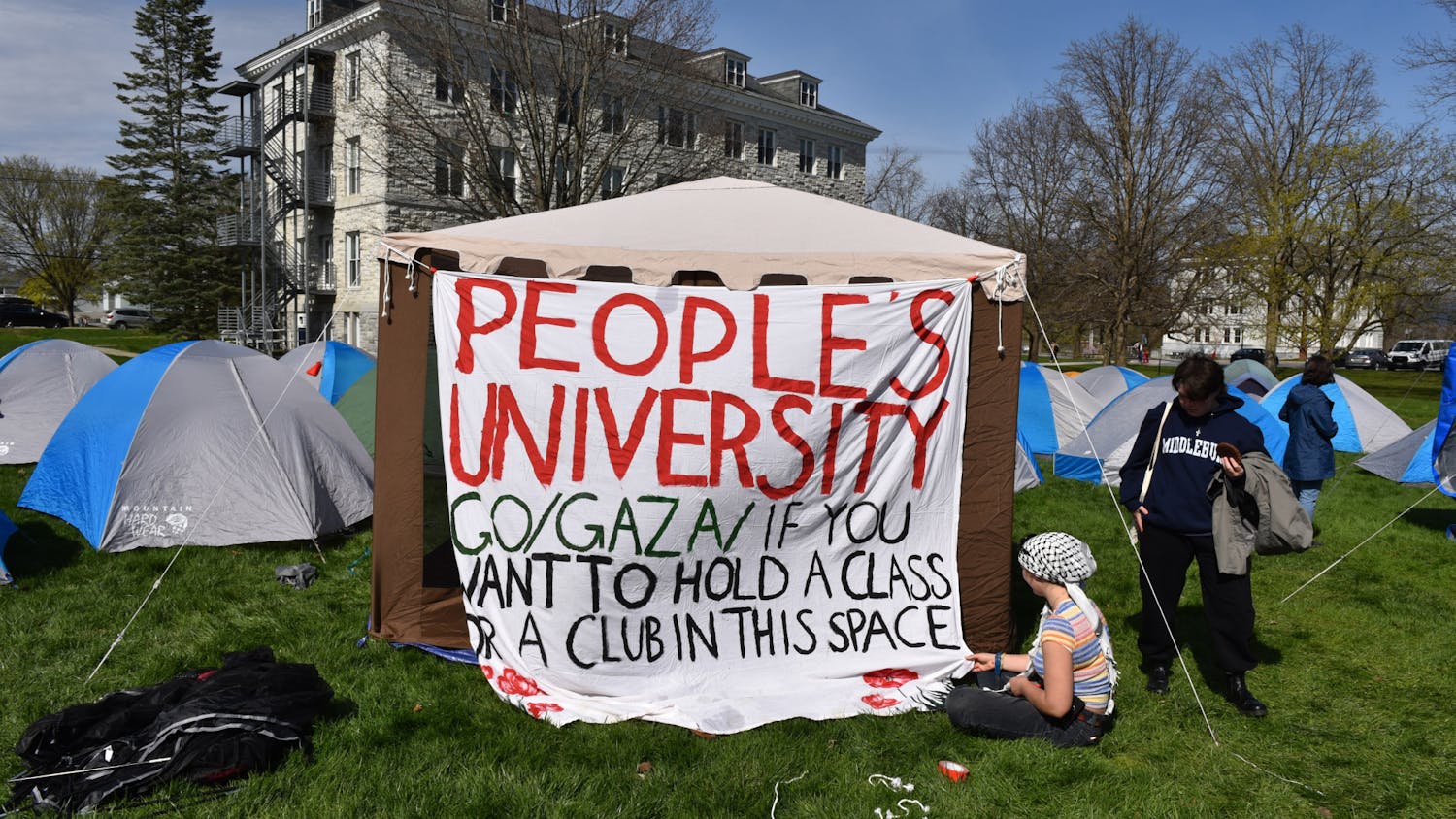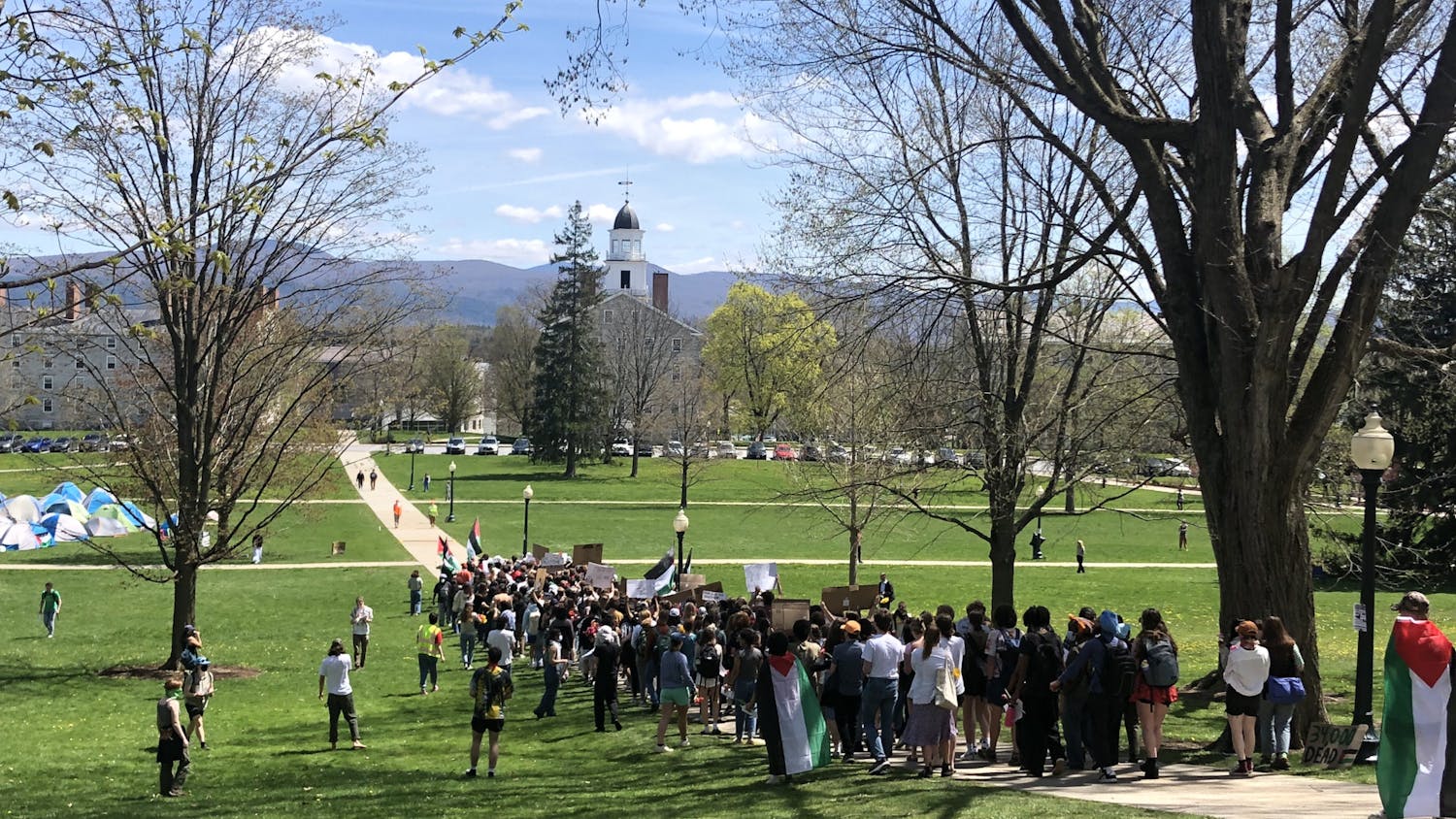Author: Nicha Rakpanichmanee
Masons arrived at the Christian A. Johnson Art Building last Monday, a few days after a locksmith reported to the Office of Facilities Management that stones appeared to be pulling away from the south wall of the building facing the Sunderland Language Center.
Despite some initial student reactions to the ongoing removal of Johnson's south façade stones, the building is not falling apart. The masonry problem has long accompanied Johnson and "reappeared" after a repair 10 years ago, explained Christian A. Johnson Professor of Art Glenn Andres. Customer Service Representative of Facilities Management Harold Strassner added that the stones will be bound again to the south wall exterior, and Johnson should gain back its "original look" this summer.
While Johnson's exterior will not undergo any dramatic changes, the building itself will be renovated, beginning in December 2006 at the latest, according to the conditions of a $2.5 million donation pledged by the Christian A. Johnson Endeavor Foundation three years ago during the College's Bicentennial Campaign. The donation agreement specified that renovations would pave the way for the political science and economics departments to move into the building.
When the Johnson Foundation granted Middlebury College with $1.6 million to build a music and art building in 1968, the donor intended to "ignite … the study of the arts at Middlebury," commented Acting President Ron Liebowitz. "By the time the Center for the Arts (CFA) had been opened in 1991, the donor believed the Johnson building had served its purpose."
Studio Art Program Director Jim Butler said that because Johnson was designed strictly for artistic purposes, "the spaces in the building are irreplaceable." Butler said that the three-story-high atrium is central to Johnson for its function in the "teaching of visual arts," "exhibition" and "communication between the different classes, students and faculty." The atrium, Butler noted, is "visually accessible to anyone in the building from any floor."
Butler said that Johnson's architect modeled the building after the Whitney Museum of American Art and the Yale University art and architecture building in New Haven. Butler said that Johnson is "architecturally very unusual" and belongs to a unique and bygone time period. He furthered that, "The issue for the Studio Art Program isn't what the Johnson building looks or doesn't look like. The interior of the building functions beautifully for the purpose for which it was designed."
However, Liebowitz acknowledged several concerns about the difficulty of maintaining the same building for studio art and art history. He referred to the new carpeting that was installed and was soon after stained with paint. "Studio art faculty would argue that carpeting should never have been used in an art building in the first place," said Liebowitz.
Studio art projects, added Liebowitz, would sometimes "extend beyond the studios." He said that the donor "wanted to ensure that the building would not be overly crowded."
Christian Johnson was an economist, and the current donor of the Foundation a Middlebury alumna. According to Liebowitz, the donor "wanted to bring together academic programs, such as economics and political science, whose content complemented each other." Now that the CFA serves as the arts center for the College, he Liebowitz said that "the donor believed there is less of a need for Johnson to play the role it had when it was first built."
The History of Art and Architecture (HAA) Department, which now shares Johnson with the studio art program, "was originally supposed to be incorporated in the CFA along with the museum," said Andres. Although the HAA department has "largely succeeded" in "refining our quarters in Johnson to make them serve our purposes," said Andres, a move could potentially benefit the HAA Department. "State-of-the-art audio-visual classrooms, more space for the pre-architecture program and a museum connection," which Andres called "one of our major teaching resources," would all be beneficial in a new facility. He added that the studio art program could also benefit from a move because it "has serious space needs."
However, Butler said that, "Relatively inexpensive retrofitting would suffice for the studio art program's needs as far into the future as I can certainly see." He said that artists require two things: space and light. "I'm not sure if we'd receive the same square footage and atrium space, which is not just decorative. It's a teaching environment as useful as any science laboratory."
Andres also remarked that either the HAA department's or the studio art program's move away from Johnson "will pose other complexities." For example, at least one of the programs will be far from the Slide Library, which currently serves both the programs' needs in Johnson.
Aside from disagreement in the benefits of a move out of Johnson, communication regarding the planning of the building and its currently housed programs has been varied at different ends.
Andres chairs the Library Program and Building Committee and has been aware of a "stated plan" to refurbish Johnson by 2006 "for uses other than the visual arts." He said an ideal move would be "in conjunction with the Museum of Art," whether the HAA winds up at the CFA or as part of the renovated Starr Library.
"A renovated Starr Library is one of the possible places the HAA might be relocated," explained Liebowitz, "but this has not yet been determined." Upon the new library's completion, one proposal for Starr Library is to establish a literature and film/video center. "The group that has begun to discuss Starr's program has included the HAA as part of its program discussion," said Liebowitz.
The studio art program, however, has neither been included in the planning nor informed of the tentative ideas, according to Butler. "No one has approached us as to where or when we'd move or how much space we'd have," he said.
"Across the country, the interest in science and the money on athletics and the facilities thereof is dramatically outsized in relation to the infrastructure provided to the study for the plastic arts," continued Butler. "We have the lowest number of teaching faculty of the 20 schools that Middlebury compares itself to in studio art." The program has three full-time faculty members and one temporary year-long appointment position. When asked whether the uncertainty of the studio art program's future location reflects the Colleges' commitment to the program, Butler replied, "I think that answers for itself."
Liebowitz said that faculty from all the concerned programs — including HAA, studio art, political science and economics — were informed about the donation for Johnson three years ago.
As for the studio art program's future site, Liebowitz said that there were several possibilities, but that a newly built facility is likely, "although there are no plans for that just yet." The question of possible relocation of the studio art program "will not be engaged until after the new library, Atwater Commons and Starr [renovation project] have been planned, approved by the Board of Trustees and begun."
"A new building might be a diminishment of the spaces we already have," commented Butler, "though that's completely hypothetical."
Even the certainty of the HAA department's relocation "might be open to question," added Andres as he mentioned the complex planning process that is required before a recommendation to and approval by the Board of Trustees.
The move of the economics and political science departments will only happen, said Liebowitz, after the Board of Trustees has given its approval. He explained that as the time draws nearer, space planners and engineers would have to ensure that the building's square footage and design can support the departments' nee
ds.
Fund to Renovate Johnson Threatens to Displace Art Program
Comments



![Laurie Patton Rectangle Headshot[58].jpg](https://snworksceo.imgix.net/mbc/26b648c7-7bf1-4d21-8aba-b7ef29d68ebb.sized-1000x1000.jpg?w=1500&ar=16%3A9&fit=crop&crop=faces&facepad=3&auto=format)